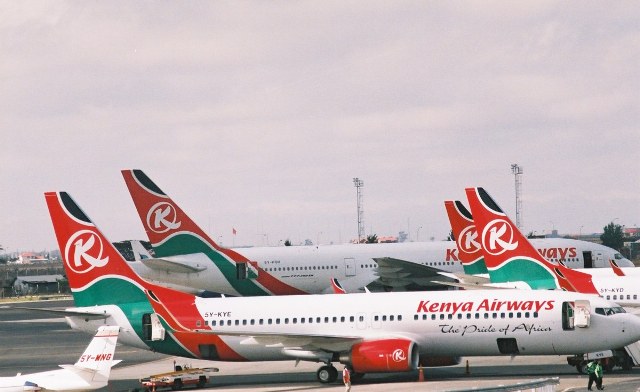Julius Thairu is the Chief Commercial & Customer Officer at Kenya Airways
According to a report from Aviation Benefits Beyond Borders, an aviation industry body based in Switzerland, air transport is at the heart of global economic growth. Therefore, it is a crucial driver of development. The report adds, “the aviation industry supports USD 3.5 trillion or 4.1 percent of the world’s gross domestic product. If aviation were a country, it would rank 17th in size by GDP.”
Countries that are alive to these facts are now going all-out to ensure a robust aviation industry. Take, for instance, Saudi Arabia. An article from Business Insiders states, “Saudi has announced a new airline to bring in tourists as it tries to attract 100 million visitors to the kingdom by 2030.” Furthermore, the article mentions that the new airline will cover 100 destinations and have its hub at Riyadh’s King Salman International Airport, which is being reimagined as a mega airport with upgraded facilities and infrastructure.
Recent reports from India show that Air India that was privatized just over a year ago and is now owned by Tata Group has ordered the highest order of aircraft. According to media reports, Air India ordered 470 planes worth between $80-100 billion, the largest bulk order for aircraft, the second highest was by American Airlines for 460 planes in 2011. The deal has the potential to not only uplift Air India to the number one position in the domestic aviation sector but also spur jobs in India, USA and Europe. According to the Tata group chairman manufacturing of some of the aircraft parts could be done in India, giving boost to domestic manufacturing, and creating employment opportunities too.
Closer home, Rwanda is constructing what may be one of Africa’s largest international airports. According to Julius Ngenga, CEO of ATLH, the holding company formed by the Government of Rwanda to manage aviation-related activities, “The objective is to make the country an African hub connecting businesses, people and countries. The airport is designed in phase one for 8.2 million passengers per year and 14.2 million in phase two.” The project is a USD 2 billion project touted as a game changer for aviation on the continent. Rwanda also intends to leverage intra-Africa trade to boost cargo traffic in and out of the country.
What the above ‘projects’ have in common is the potential for economic transformation and forex consolidation for their home markets.
Kenya Airways (KQ) is one of Africa’s leading airlines. We fly to 42 destinations globally, 35 of them within Africa and code share partnerships that allows us to expand our network to over 100 destinations globally. KQ employs close to 4,000 people directly and thousands more indirectly. Anecdotal evidence reveals that KQ contributes close to 5% of Kenya’s GDP. Last year, the airline won four awards at the World Travel Awards. Africa’s Leading Airline 2022 and Africa’s Leading Airline Brand, Business Class, and Inflight Magazine (Msafiri) 2022. Kenya Airways Cargo won the highly acclaimed African Cargo Airline of the Year at the STAT Trade Times Awards in Johannesburg, South Africa, this year. These recognitions and accolades from our customers and industry peers show that they have confidence in the business of KQ and their experiences with the products and services offered.
For several years now, Kenya Airways has not been on very sound financial footing. This has primarily been informed by some of its legacy issues that mainly include loans and fleet costs, amongst other burdens not in the airline’s control. Therefore, whilst any business concern needs to turn a profit with dividends to owners, it is also worth noting that KQ delivers substantive value to its stakeholders.
We have been working on several areas to support the recovery and turnaround of KQ towards profitability. This process is a journey as aviation is a high-cost, low margin business that can be drastically impacted by changes within the operating environment like a pandemic, forex, and fuel volatility.
Some of the actions we are undertaking include debt restructuring that includes the restructuring of the government-guaranteed debt, reducing high costs of operations by 10% by 2024, lease cost reduction that has so far achieved a 22% reduction on leases, operational excellence to improve our reliability and on-time arrivals and departures, diversification and improvement on our customer and employee experiences. All these working together will drive us towards recovery.
In conclusion, 56% of the passengers carried on KQ are tourists. This number can be enhanced with far-reaching effects when considering tourism, a big forex consolidator. Cut flowers and fresh produce are maintained by dedicated freighters and in the bellies of passenger planes to markets in the West. Yet the potential for more of this cargo business is almost limitless. KQ is serving only a section of mama mbogas and local fishermen. This could be enhanced multiple times with benefits to the economy as money is put in the hands of farmers. KQ is at the heart of the economic transformation of Kenya and the continent. The past two years have been a difficult period in the history of aviation. We are now on a path to recovery to continue connecting Africa to the world and the world to Africa to drive sustainable development across the African continent.

